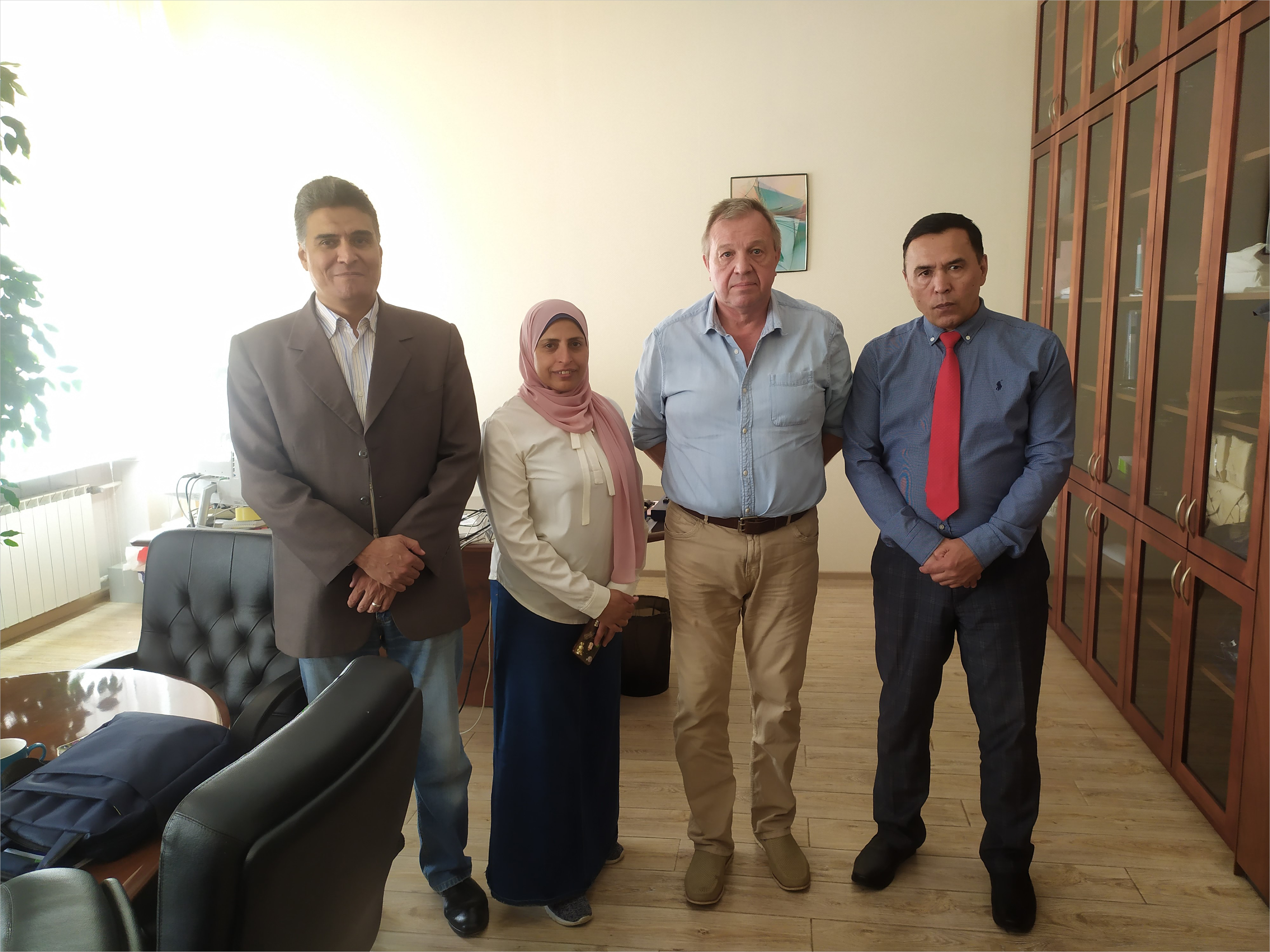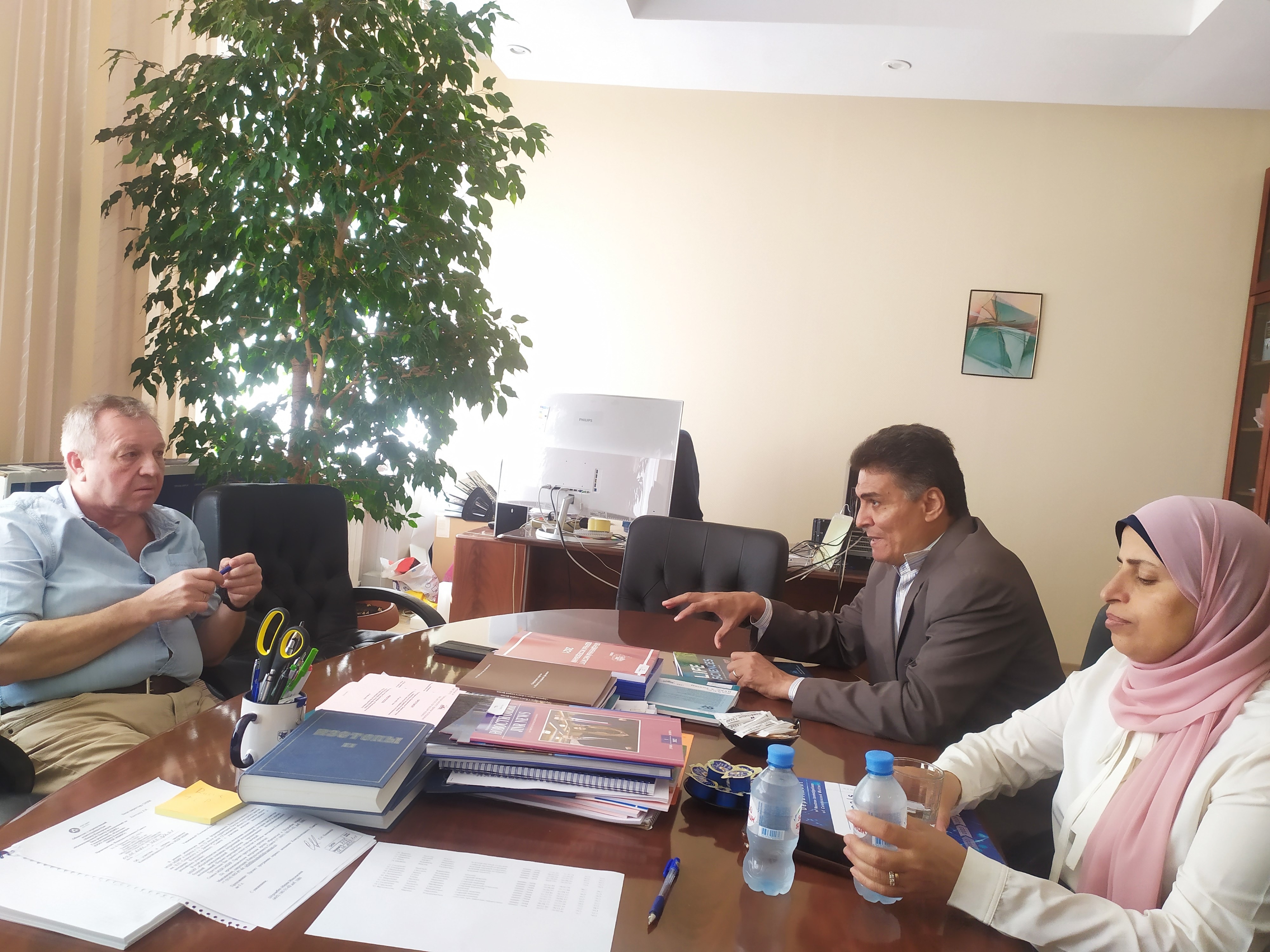JINR-Egypt cooperation in field of nuclear spectroscopy
News, 25 July 2022
In July, a research group from Egypt had a working visit to the Laboratory of Neutron Physics JINR in the frames of the joint project of the Academy of Scientific Research and Technology of Egypt (ASRT) and JINR “Molecular Modeling and Experimental Neutron Scattering Studies of Interactions of the Condensed Matter and Biological (Lipid Membranes) Systems”. Heads of the joint project met with FLNP Director Valery Shvetsov to discuss the status of the cooperation and prospects for its further development.
Professor of Physics and Ex-Head of Physics Department of the Faculty of Women for Arts Science and Education of Ain Shams University (ASU) Khana al-Hayes and Professor of Applied Spectroscopy and Molecular Modeling at Spectroscopy Department of National Research Centre (NRC) Medkhat Ibrahim are executives of the project on behalf of Egypt. Asmaa Ibrahim, a graduate student from Egypt and a member of the scientific group, visited JINR together with the executives. Professor, a FLNP leading researcher Kholmirzo Holmurodov is an executive on behalf of JINR.
In the frames of the project, the Egyptian team have obtained the results of research on interaction between graphene quantum dots (GQDs) and graphene oxide as a substrate and cholesterol as a biological molecule using quantum mechanical calculations. Egyptian scientists have performed the X-ray structural analysis of the samples at the Xeuss 3.0 facility, and computer modeling will be carried out on the JINR supercomputer “Govorun”. The research area has been subsequently extended to study several biological molecules with other nanostructure substrates. The outcomes of the present study on molecular modeling are supposed to be published in one of the highly ranked scientific journals.
At the next stage of the project, specialists will conduct the computer molecular dynamic modeling on the same model molecules at JINR to confirm the obtained results. It is supposed that one of the development directions of the project is the verification of the model using the research facilities in the Laboratory of Neutron Physics JINR.
Understanding the mechanism of interaction in the objects mentioned above is an important step towards the development and implementation of advanced biosensors. The research of this project is ultimately aimed at creating cost-efficient and environmentally friendly biosensors. Biosensors are analytical devices that use biological materials to “recognise” certain molecules or biological structures in the studied samples. They provide information about their presence and quantity by producing an electrical signal. Biosensors are quite widely used in various fields such as agriculture, medicine, biological protection, etc.
The team of Egyptian scientists and specialists also includes Professor Osama Osman (NRC), Professor Abdel Aziz Mahmoud (NRC), Doctor Hend Ezzat (NRIAG), Rania Badry (Assiut University), and Asmaa Ibrahim (ASU). Employees of the Sector of the Department of Neutron Investigations of Condensed Matter of FLNP JINR and students of the University “Dubna” participate in the project.
It should be noted that this is the second research project implemented by these teams of researchers resulted in seven reports presented at international scientific conferences.

